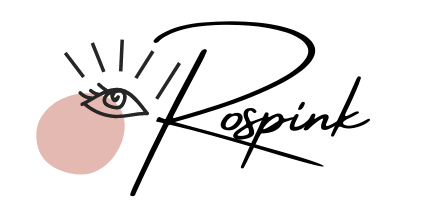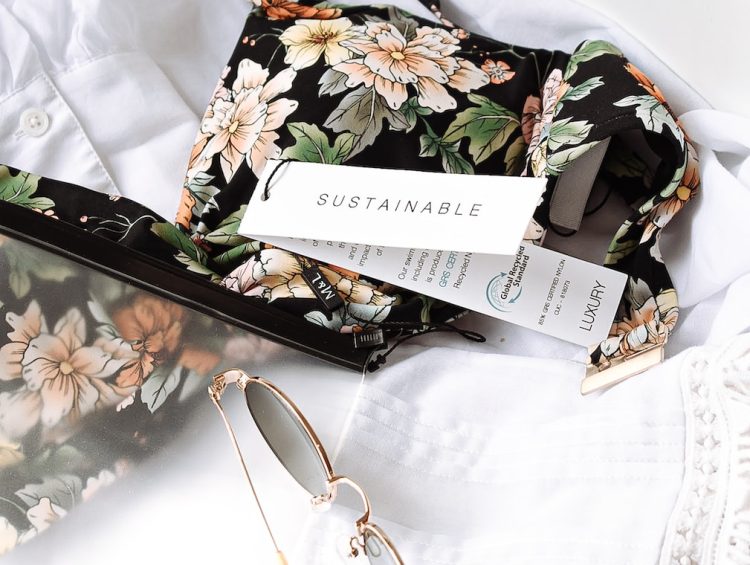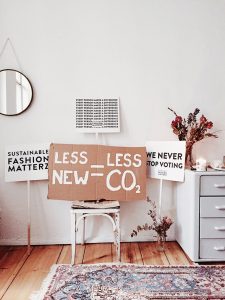Welcome to the world of sustainable fashion, where style meets sustainability! If you’ve ever wondered how your clothing choices impact the planet and want to make a positive change, this blog post is for you. Sustainable fashion is not just a trend; it’s a movement that is revolutionizing the industry and shaping the way we dress with purpose. In this article, we will explore what sustainable fashion really means, its benefits and challenges, as well as how you can join in on this exciting shift towards a more ethical and eco-friendly wardrobe. So get ready to discover the power of dressing consciously and stylishly – let’s dive into the world of sustainable fashion together!
What is sustainable fashion?
What is sustainable fashion? It’s a term that has been buzzing around in the fashion industry, but what does it really mean? Simply put, sustainable fashion refers to clothing and accessories that are designed, produced, and consumed in a way that minimizes their impact on the environment and supports fair labor practices.
One of the key aspects of sustainable fashion is reducing waste. This can be achieved through various means such as using recycled materials or upcycling old garments into new ones. Sustainable brands also prioritize resource conservation by using eco-friendly production methods and implementing efficient supply chains.
But it’s not just about being environmentally friendly – ethical considerations play a major role too. Many sustainable fashion brands focus on providing safe working conditions for their employees and ensuring fair wages throughout the supply chain. By supporting these brands, you become part of a movement that values both people and planet.
Sustainable fashion goes beyond just creating stylish clothing; it also encourages conscious consumerism. It prompts us to think more critically about our purchasing habits – do we really need another fast-fashion item that will end up in landfill after a few wears? By choosing sustainable options, we can build a wardrobe filled with pieces that have longevity in both style and quality.
So whether it’s shopping from ethical brands or embracing second-hand clothing, there are countless ways to participate in sustainable fashion without sacrificing your personal style. It’s all about making mindful choices that align with your values while still looking fabulous! The future of fashion is undoubtedly shifting towards sustainability, so let’s embrace this positive change together.
How is sustainable fashion different from regular fashion?
When it comes to fashion, most of us are familiar with the trends and styles that dominate the industry. But have you ever stopped to think about how your clothing choices impact the environment? That’s where sustainable fashion comes in.
Sustainable fashion is all about creating clothing in a way that minimizes harm to the planet and its resources. Unlike regular fashion, which often relies on fast production methods and cheap materials, sustainable fashion takes into account the entire lifecycle of a garment – from design and sourcing of materials, to manufacturing processes and end-of-life options.
One key difference between sustainable fashion and regular fashion is the focus on ethical practices. Sustainable brands prioritize fair labor conditions for workers throughout their supply chains, ensuring that everyone involved is treated fairly and paid a living wage.
Another aspect that sets sustainable fashion apart is its commitment to using environmentally friendly materials. Many sustainable brands opt for organic or recycled fibers, reducing reliance on harmful chemicals used in conventional textile production.
Additionally, sustainable fashion aims to reduce waste by promoting recycling or upcycling garments instead of throwing them away. This not only reduces landfill waste but also extends the life cycle of clothing items.
In terms of style, sustainable fashion offers unique designs that go beyond fleeting trends. These pieces tend to be timeless classics made with high-quality craftsmanship meant to last for years rather than being discarded after just one season.
By choosing sustainable fashion over regular fast-fashion options, you can help make a positive impact on both people and the planet while still looking stylish! So next time you’re shopping for clothes, consider going green with your wardrobe choices.
The benefits of sustainable fashion
One of the major benefits of sustainable fashion is its positive impact on the environment. Traditional fashion practices often contribute to pollution, deforestation, and excessive water usage. In contrast, sustainable fashion focuses on reducing waste and minimizing environmental harm. By using eco-friendly materials such as organic cotton, hemp, or recycled fabrics, sustainable brands help conserve natural resources and limit their carbon footprint.
Another advantage of sustainable fashion is its commitment to fair labor practices. Many fast fashion companies exploit workers in developing countries by paying extremely low wages and subjecting them to unsafe working conditions. Sustainable brands prioritize ethical manufacturing processes and ensure that their workers receive fair pay and work in safe environments.
Furthermore, embracing sustainable fashion allows individuals to make a personal statement about their values through what they wear. By choosing clothing from brands that align with their principles, people can express their support for social justice issues or environmental causes.
Sustainable fashion also promotes longevity in clothing items. Instead of following short-lived trends that result in constant wardrobe turnover, sustainable brands offer high-quality garments designed to last longer both in terms of style and durability.
Supporting the growth of sustainable fashion helps foster innovation within the industry itself. As consumers demand more environmentally friendly options, designers are pushed to find creative solutions like upcycling or utilizing renewable energy sources during production.
The benefits of adopting a more sustainable approach to fashion are undeniable – from protecting our planet’s precious resources to promoting fair labor practices and fostering innovative design methods.
The challenges of sustainable fashion
The challenges of sustainable fashion are not to be overlooked. While the industry is making strides towards a more environmentally friendly and socially responsible approach, there are still obstacles that need to be addressed.
One major challenge is the cost associated with producing sustainable fashion. The use of organic materials, fair trade practices, and ethical manufacturing processes often results in higher production costs, which are then passed on to consumers. This can make sustainable fashion less accessible to those on tighter budgets.
Another challenge is the limited availability of sustainable options. Despite increasing demand for eco-friendly clothing, many mainstream retailers still prioritize fast fashion and mass production. Finding stylish and affordable sustainable garments can therefore require extra effort and research.
Additionally, there is a lack of transparency within the industry. Some brands may claim to be “green” or “sustainable,” but their actual practices might tell a different story. Without clear standards or regulations in place, it can be difficult for consumers to distinguish between genuinely sustainable brands and greenwashing.
Furthermore, changing consumer behavior poses another obstacle for sustainable fashion. Many people have become accustomed to the convenience and affordability of fast fashion, making it challenging to shift towards more conscious consumption habits. Education about the environmental impact of fast fashion plays an important role in overcoming this barrier.
Scaling up sustainability initiatives within large-scale production systems presents its own set of challenges. Implementing changes across complex supply chains requires significant investment and coordination among various stakeholders involved in each step of the process.
While there are certainly challenges facing the growth of sustainable fashion, these obstacles should not discourage us from pursuing change within the industry. By raising awareness about these issues and supporting brands that prioritize sustainability efforts throughout their entire value chain, we can collectively work towards a more ethically sound future for fashion.
The future of sustainable fashion
The future of sustainable fashion holds great promise for the industry and the planet. As awareness about environmental issues grows, more and more people are seeking out clothing options that align with their values. This demand is driving innovation and change in the fashion world.
One key aspect of the future of sustainable fashion is a shift towards circularity. Rather than following a linear model where garments are produced, worn, and then discarded, there is a move towards creating a closed-loop system. This means designing clothes with longevity in mind, using materials that can be easily recycled or biodegraded at the end of their life cycle.
Advancements in technology also play a crucial role in shaping the future of sustainable fashion. From fabric innovations like plant-based alternatives to traditional textiles to digital solutions that optimize supply chains and reduce waste, technology offers exciting possibilities for making the industry more eco-friendly.
Another important trend is transparency. Consumers increasingly want to know where their clothes come from and how they are made. Brands will need to provide clear information about their sourcing practices, manufacturing processes, and overall sustainability efforts to meet this demand for transparency.
Collaboration will be essential in driving meaningful change within the industry. Fashion brands, suppliers, manufacturers, NGOs, consumers – everyone has a part to play in creating a more sustainable future for fashion. By working together and sharing knowledge and resources, we can make significant progress towards reducing our environmental footprint.
When it comes to shopping for sustainable fashion, there are a few key considerations to keep in mind. First and foremost, do your research. Look for brands that prioritize ethical practices and use materials that have a low environmental impact. This might mean choosing organic cotton or recycled fabrics over synthetic materials.
Another important aspect of shopping sustainably is investing in quality pieces that will last. Avoid falling into the trap of fast fashion, where items are cheaply made and quickly discarded. Instead, opt for timeless designs and well-made garments that can be worn season after season.
Supporting local artisans and independent designers is also a great way to shop sustainably. By purchasing from smaller businesses, you can often find unique and one-of-a-kind pieces while also supporting the local economy.
Consider buying second-hand or vintage clothing as well. Thrift stores, consignment shops, and online marketplaces offer a treasure trove of pre-loved items that are not only budget-friendly but also reduce waste by giving these garments a new lease on life.
Don’t forget about accessories! Sustainable fashion extends beyond just clothing – consider opting for eco-friendly jewelry made from recycled metals or sustainable textiles like bamboo or cork.
By following these guidelines when shopping for sustainable fashion, you can make choices that align with your values while still looking stylish and chic!
Conclusion
Sustainable fashion is not just a trend, but a movement that is reshaping the entire fashion industry. With increasing awareness about the environmental and social impact of clothing production, consumers are demanding more sustainable options. This shift towards sustainability has led to numerous positive changes in the way clothes are made and consumed.
By choosing sustainable fashion, you can make a real difference in preserving our planet and supporting ethical practices. From reducing waste and carbon emissions to promoting fair trade and worker rights, there are many benefits associated with embracing sustainable fashion.
However, it’s important to acknowledge that transitioning to a fully sustainable fashion industry comes with its challenges. Implementing eco-friendly manufacturing processes requires time, resources, and innovation. Additionally, making sustainable choices might come at a higher price point for some consumers.
Nonetheless, the future of sustainable fashion looks promising. As more designers and brands recognize the importance of sustainability, we can expect to see an increase in eco-conscious collections hitting the runways. The use of innovative materials like recycled fabrics or organic fibers will become more widespread.
To embrace sustainable fashion in your own wardrobe, start by educating yourself about different brands’ sustainability initiatives. Look for certifications like Fairtrade or GOTS (Global Organic Textile Standard) labels when shopping for clothing items. Consider buying second-hand or vintage pieces instead of always opting for fast-fashion alternatives.
Remember that every small step counts towards creating a more sustainable future for our planet – even if it means changing one purchase at a time.
So let’s dress with purpose! By embracing sustainable fashion choices today, we can contribute towards building a greener tomorrow for ourselves and future generations






